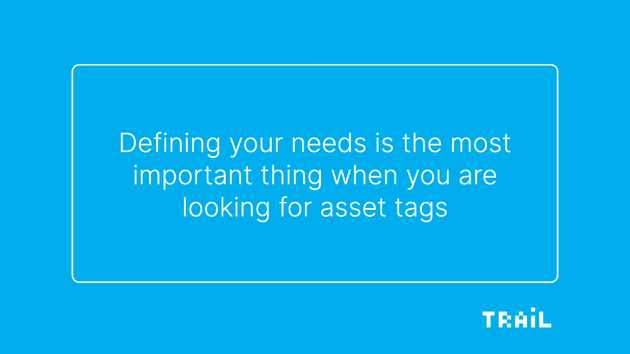Have you considered labelling your equipment with asset tags? You might be looking for RFID, NFC or QR code tags that you could attach to your equipment and track it.
That is a fantastic idea! But don’t start by looking for asset tags. Start by defining your needs and what you want to achieve with the tags.
Asset tags without a proper asset management system are useless. In this blog post I will explain why.
Want to know what you need in addition to asset tags? Book an asset management demo
Asset tag is nothing but an identifier
The asset tags include only a limited amount of data. Usually, it is a short string of characters. When you scan the tag with a proper reading device, you the reader will show only this string and nothing more.
The string alone does not help you very much. But it can act as a unique identifier for the item. Tagging the item is only the first step in tracking the item and its life-cycle.
The next step is to link the tag with an asset management system. The system allows you to store basically limitless amount of data for the item.
Of course, the tags (such as a QR code) can include a lot of text. But you still need a way to store and update the information. And an asset management system is the easiest way to do this.
Equipment management system allows to store life-cycle information
Now we know that the tags are mainly used to identify the items. So, the big question is: why do you want to identify the items?
Defining your needs is the most important thing when you are looking for asset tags.
I bet that you want to track the items and access the item data, for example:
- Purchase data (date, price, vendor)
- Warranty period
- Receipts, user manuals, other attachments
- Maintenance information (maintenance history, date of next inspection)
- Location
- Reservation information (who has used it and are there any reservations for this item)
- Inventories (what you have and where)
You cannot achieve this with only the asset tags. A proper equipment management system allows you to store, manage and update all this information easily.
How to link asset tags with an asset management system?
So, the tags should be linked to an asset management system. But how you do that? How do the tags work together with a system?
Most asset and equipment management systems have their own identifiers. When you implement the system, you will receive the tags this system uses.
Flexible asset management systems, such as Trail, allow you to use all kinds of asset tags. You can choose from a wide range of QR codes, NFC tags and RFID tags and use different tags in different items. It is even possible to link your existing tags with Trail if you already have tagged your equipment with some identifiers.
Summary
When you are looking for ways to tag your assets, you need to ask yourself “What do I want to achieve with the asset tags?”
The asset tags can be used to identify items, but they don’t provide much more. If you want to track your items and utilize the items’ life-cycle data, you also need a proper asset management system.
When the asset tags are linked with the asset management system, you can access, manage, and update the item information easily.
For more information about different asset tags, please visit our Asset Tags Guide.

